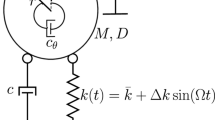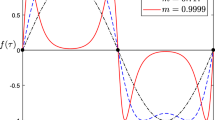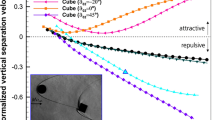Abstract
Since Newton first considered the motion of a spherical pendulum over 200 years ago, many researchers have studied its dynamic response under a variety of conditions. The characteristic of the problem that has invited so much investigation was that a spherical pendulum paradigms much more complex phenomena. Understanding the response of a paradigm gives an almost multiplicative effect in the understanding of other phenomena that can be modeled as a variant of the paradigm. The spherical pendulum has been used to damp irregular motion in helicopters and on space stations as well as for many other applications. In this study an inverted impacting spherical pendulum with large deflection was investigated. The model was designed to approximate an ideal pendulum, with the pendulum bob contributing the vast majority of the mass moment of inertia of the system. Two types of bearing mechanisms and tracking devices were designed for the system, one of which had low damping coefficient and the other with a relatively high damping coefficient. An experimental investigation was performed to determine the dynamics of an inverted, impacting spherical pendulum with large deflection and vertical parametric forcing. The pendulum system was studied with nine different bobs and two different base configurations. During the experiments, the frequency of the excitation remained between 24.6 and 24.9 Hz. It was found that sustained conical motions did not naturally occur. The spherical pendulum system was analyzed to determine under what conditions the onset of Type I response (a repetitive motion in which the pendulum bob does not traverse through the apex. The bob strikes the same general area of the restraint without striking the opposite side of the restraint.), sustainable Type II response (this is the repetitive motion in which the pendulum bob traverses through the apex. The bob strikes opposite sides of the restraint.), and mixed mode response (motion in which the pendulum bob randomly strikes either the same area of the restrain or the opposite side of the restraint) occurred.


















Similar content being viewed by others
Abbreviations
- a :
-
Amplitude of base displacement
- C :
-
Coulomb damping coefficient
- g :
-
Gravitational acceleration
- L :
-
Length of pendulum
- M d :
-
Dynamic mass = M s + M r/2
- M r :
-
Mass of pendulum rod
- M s :
-
Mass of spherical pendulum bob
- Ω :
-
Frequency of base displacement
- ϕ :
-
Latitudinal angular displacement
- R :
-
Coefficient of Restitution
- r b :
-
Radius of bearing
- r r :
-
Radius of pendulum rod
- r s :
-
Radius of spherical pendulum bob
- θ :
-
Longitudinal angular displacement
References
Salam FMA, Sastry SS (1985) Dynamics of the forced Josephson junction: the regions of chaos. IEEE Trans Circuits Syst 328:784–796. doi:10.1109/TCS.1985.1085790.
Lee WK (1988) A global analysis of a forced spring pendulum system. Ph.D. Dissertation, University of California, Berkeley
Nayfeh AH, Mook DT, Marshall LR (1973) Nonlinear coupling of pitch and roll modes in ship motions. J Hydrodynam 74:145–152.
Mustafa G (1987) Three-dimensional rocking and topping of block-like structures on rigid foundation. M.S. Thesis, Texas Tech University, Lubbock, Texas
Crossley FRE, Conn NH (1953) The forced oscillation of the centrifugal pendulum with wide angles. J Appl Mech 75:41–47.
Eugene S (1961) On the parametric excitation of pendulum type vibration absorber. J Appl Mech 330–334
Struble RA (1963) Oscillations of a pendulum under parametric excitation. Q Appl Math 212:121–131.
Mustafa G, Ertas A (1995) Experimental evidence of quasi-periodicity and its breakdown in the column-pendulum oscillator. J Dyn Syst Meas Control 1172:218–225. doi:10.1115/1.2835182.
Mustafa G, Ertas A (1995) Dynamics and bifurcations of coupled column-pendulum oscillator. J Sound Vib 1823:393–413. doi:10.1006/jsvi.1995.0207.
Ekwaro-Osire S, Ertas A (1995) Response statistics of a beam-mass oscillator under combined harmonic and random excitation. J Vib Control 12:225–247. doi:10.1177/107754639500100206.
Cuvalci O, Ertas A (1996) Pendulum as vibration absorber for flexible structures: experiments and theory. J Vib Acoust 118:1–9.
Cuvalci O, Ertas A, Cicek I, Ekwaro-Osire S (2002) Nonlinear vibration absorber for a system under sinusoidal and random excitation: experiments. J Sound Vib 2944:701–718. doi:10.1006/jsvi.2001.3836.
Cicek I, Ertas A (2002) Experimental investigation of beam-tip mass and pendulum system under random excitation. Mech Syst Signal Process 166:1059–1072. doi:10.1006/mssp.2001.1475.
Cajori F (1947) Sir Isaac Newton’s mathematical principles on natural philosophy and his system of the world. University of California Press, Berkeley.
Miles J (1979) On the dumped oscillations of a weakly nonlinear pendulum. J Appl Mech 46:213
Tselman FK (1972) Resonance in small oscillations of the spherical pendulum. Sov Phys Dokl 171:37–38.
Peters RD (1988) Chaotic motion from support constraints of a nondriven rigid spherical pendulum. Phys Rev A 3810:5352–5359. doi:10.1103/PhysRevA.38.5352.
Livesey DL (1987) The precession of simple pendulum orbits. Am J Phys 557:618–621. doi:10.1119/1.15075.
Lowenstern MA (1932) The stabilization effect of imposed oscillations on a dynamical system. Philos Mag 13:458–486.
Hemp GW, Sethna PR (1964) The effect of high frequency on the motion of a spherical pendulum. J Appl Mech 31:351–354.
Moran TJ (1970) Transient motions in dynamical systems with high frequency parametric excitation. Int J Non-linear Mech 5:633–644. doi:10.1016/0020-7462(70)90053-3.
Shaw SW, Rand RH (1989) The transition to chaos in a simple mechanical system. Int J Non-linear Mech 241:41–56. doi:10.1016/0020-7462(89)90010-3.
Shaw J, Shaw SW (1989) The onset of chaos in a two degree of freedom impacting system. J Appl Mech 56:168–174.
Moore DB, Shaw SW (1990) The experimental response of an impacting pendulum system. Int J Non-linear Mech 251:1–16. doi:10.1016/0020-7462(90)90034-7.
Dongping J, Haiyan H, Bishop RS (2003) Piecewise analysis of oblique vibro-impacting systems. Acta Mech Sin 196:579–584.
Namachchivaya SN, Jun H, Park HJ (2005) Stochastic dynamics of impact oscillators. J Appl Mech 726:862–870. doi:10.1115/1.2041660.
Lenci S (2006) Asymptotic analysis of chattering oscillations for an impacting inverted pendulum. J Appl Math Mech 593:419–434. doi:10.1093/qjmam/hbl009.
Mann BP, Carter RE, Hazra SS (2007) Experimental study of an impact oscillator with viscoelastic and Hertzian contact. Int J Non-linear Mech 503:587–596.
Garza S (1993) Theoretical and experimental investigation of the dynamics and bifurcations of an impacting spherical pendulum with large deflection. Ph.D. Dissertation, Texas Tech University, Lubbock, Texas
Moon FC (1992) Chaotic and fractal dynamics. Wiley, New York, NY, p 336.
Author information
Authors and Affiliations
Corresponding author
Rights and permissions
About this article
Cite this article
Ertas, A., Garza, S. Experimental Investigation of Dynamics and Bifurcations of an Impacting Spherical Pendulum. Exp Mech 49, 653–662 (2009). https://doi.org/10.1007/s11340-008-9182-9
Received:
Accepted:
Published:
Issue Date:
DOI: https://doi.org/10.1007/s11340-008-9182-9




